JAXA
Latest
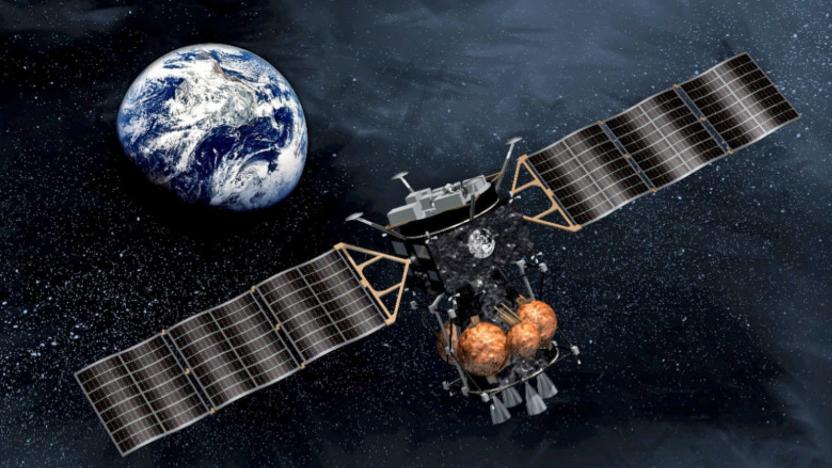
Japan will send a rover to Martian moons with help from Germany and France
We might be able to study the Martian moons Phobos and Deimos a lot more closely in the coming decade. Japan Aerospace Exploration Agency (JAXA) has teamed up with Germany's and France's space agencies to send a spacecraft with a rover to the red planet's faithful companions. In fact, JAXA has just finalized its agreement to work with the German Aerospace Center (DLR) on the study-phase activities for its Martian Moons eXploration (MMX) mission.

Japan's Hayabusa2 spacecraft bombs Ryugu asteroid
Forget bullets, Japan's Hayabusa2 spacecraft has detonated a bomb on the asteroid Ryugu to scoop up more samples. It deployed the device, known as the Small Carry-on Impactor (SCI) -- a 14kg copper container attached to the Hayabusa2 and packed with plastic explosive -- in the hopes of creating a 10-meter-wide crater on the space rock. On Friday, the SCI separated from the craft at an altitude of 500m above Ryugu and hurtled to its surface at a speed of 2 kilometers per second (4,474 miles per hour).

Japan's moon rover will be made by Toyota
Toyota is going to the moon. The Japanese Aerospace Exploration Agency (JAXA) has teamed up with the carmaker to build a pressurized self-driving rover that will land on the lunar surface in 2029. The six-wheeled transporter will be able to carry two humans for a distance of 10,000 kilometers using solar power and Toyota's fuel cell technology. The rover will be about the size of two minibuses, with 13 square meters of habitable space, and the astronauts on board will be able to take their suits off inside the vehicle as they explore. It will land on the moon before the human expedition arrives, and travel independently to meet them.

Watch the Hayabusa2 probe touch down on asteroid Ryugu
Back in February, the Hayabusa2 spacecraft touched down on asteroid Ryugu to collect samples for scientists back home. Now, Japan Aerospace Exploration Agency (JAXA) has released a video of the brief contact between the probe and its target asteroid taken by a small on-board camera. It shows the moment Hayabusa2 fired a bullet into Ryugu's surface to kick up dust and fragments it can grab -- something the probe was supposed to have done back in October 2018 if not for the fact that the asteroid has much bigger gravel than its ground team expected.

Japan's Hayabusa2 lands on asteroid Ryugu to collect samples
Japan's Hayabusa2 spacecraft has successfully touched down on the surface of asteroid Ryugu to accomplish one of its ultimate goals: collect samples for scientists back on Earth. The probe has briefly landed on the asteroid to fire a bullet into its surface and kick up dust, rocks and any other debris that it can collect. Hayabusa2 has been hovering around Ryugu since mid-2018 and even dropped two landers on the floating rock to study its surface and take photos.

Hayabusa2 probe landing delayed due to rugged asteroid surface
The Hayabusa2 spacecraft, launched by Japan's space agency JAXA, is currently studying the diamond-shaped asteroid Ryugu. After close examination of the target, a landing site was selected and touchdown for the probe was set for late October. But now, according to Phys.org, JAXA has informed reporters that the probe's deployment to the surface would be delayed until January.
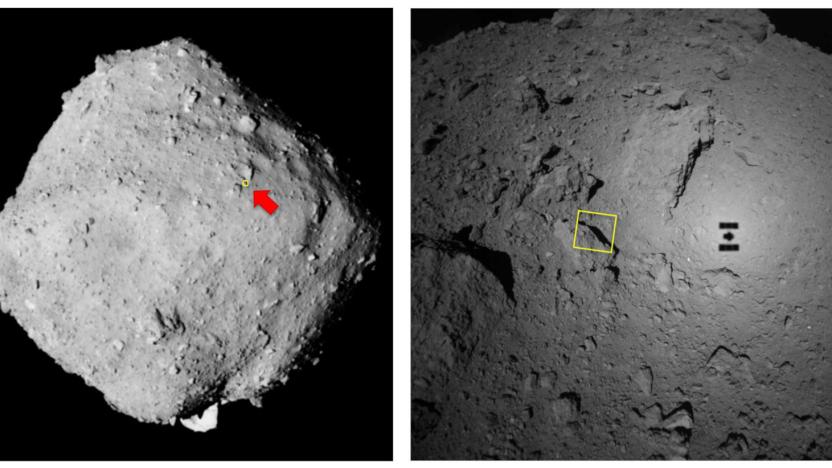
Hayabusa 2 probe snaps a close-up of its asteroid target
JAXA's Hayabusa 2 has taken the most high-resolution photo of its target asteroid, the 162173 Ryugu, we've ever seen. Unlike previous images that only showed Ryugu from afar, this one shows its surface in detail -- you can clearly see its texture and its lumpy rocks as if you're hovering right above them. The spacecraft's Optical Navigation Camera - Telescopic (ONC-T) snapped the image just as Hayabusa was zooming close to the asteroid to deploy the MINERVA-II1 rovers. ROVER-1A and 1B successfully touched down on the surface of the asteroid and have already started taking photos of their surroundings.
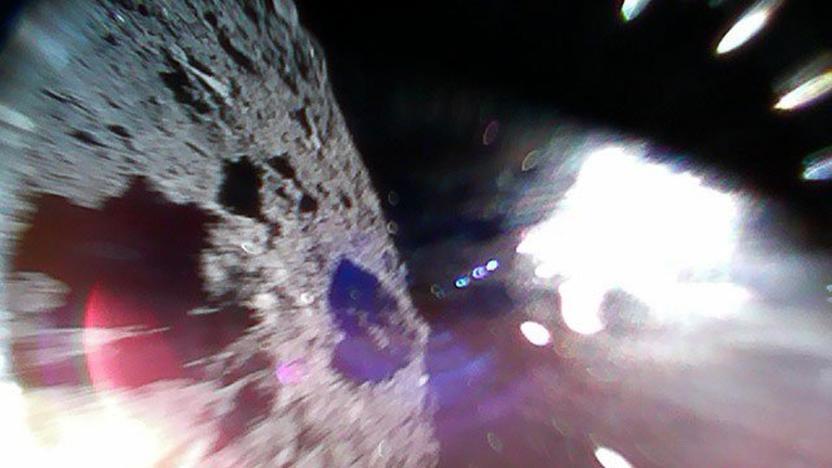
Japan's Hayabusa 2 mission lands on target asteroid
After months of hovering around its target, Japan's Hayabusa 2 mission has made contact. Two of the host spacecraft's landers (ROVER-1A and 1B) have touched down on the surface of the asteroid 162173 Ryugu and have already been hopping around as they take photos (like the one above) and gauge the space rock's temperature. As far as the mission has come, though, it's really just the start.

JAXA plans to send robot avatars with human-like hands to space
JAXA unveiled the Avatar X project in early September, revealing its plans to send humanoid machines controlled by human operators to space. Now, Japanese robotics company Meltin has announced that it has teamed up with JAXA and ANA to start the full-scale development of its MELTANT-α cyborg technology for the initiative. MELTANT-α was designed with hands that are about as strong and as fast as real ones -- they're also equipped with haptics to make them as human-like as possible. It's the perfect candidate for a project that intends to use remote-controlled humanoid machines to conduct experiments, to repair space stations and to build human settlements, among many other things.
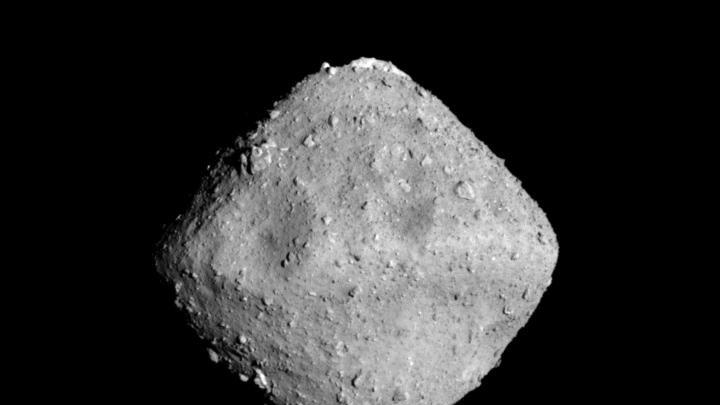
Japanese spacecraft Hayabusa 2 has reached its asteroid target
At approximately 9:35 AM Japanese Standard Time on June 27th, the JAXA (Japanese Aerospace Exploration Agency) spacecraft Hayabusa 2 successfully rendezvoused with its target, the diamond-shaped asteroid 162173 Ryugu. The spacecraft launched on December 3rd, 2014, and has spent the last three and a half years en route. The spacecraft is now just 20 kilometers away from Ryugu.

Japan launches smallest rocket ever to carry satellite into orbit
Japan has set a new spaceflight record -- and unlike most of these feats, it's defined by what wasn't involved. The country's Aerospace Exploration Agency (JAXA) has successfully launched the smallest-ever rocket to carry a satellite into orbit, a modest SS-520 sounding rocket modified with a third stage inside its nose cone to get its payload into orbit. As you might guess, the key to the record was the tiny cargo -- the rocket was carrying TRICOM-1R, a three-unit cubesat measuring just 13.6 inches long. You don't need a giant vehicle when the mission hardware would fit in the backseat of your car.

Newly-discovered lunar cave would be great for a moon base
Nothing quite captures the 2017 mood to leave Earth forever like dreaming about moon bases. Last month, space agencies from Russia and the US jointly announced plans to collaborate on such a satellite colony. But today's discovery might bring that vision closer to reality. Japan's space agency found a large cave underneath the lunar surface that seems like prime area for a human outpost.

Japan's latest GPS satellite will guide self-driving cars
Japan just fulfilled a key part of its space ambitions -- and it'll have important ramifications for everything from self-driving cars to self-defense. The country has launched its fourth Michibiki satellite, which expands a "quasi-zenith" system designed to provide greater access to GPS in urban 'canyons' where buildings tend to block signals from lower-orbit satellites. Needless to say, that's vital for autonomous vehicles that need GPS to get their bearings in a country dominated by sprawling cities.

Japan’s first private rocket launch is a partial success
The Japanese Aerospace Exploration Agency (JAXA) hasn't made a secret of their spaceflight ambitions; they aim to put humans on the moon before China. But private spaceflight is also reaching new heights (literally) in the country. On Sunday, Momo, a startup supported partially by crowdfunding, launched Japan's first commercial space rocket from Hokkaido. The rocket was built by Interstellar Technologies Inc.

Sony's A7S II camera shot 4K video from outside the ISS
Sony has revealed some dazzling 4K video shot by its low-light champ A7S II from the ISS, showing the US and Japan by day and night. The mirrorless, full-frame model is not the first 4K camera on the International Space Station -- the 6K Red Dragon preceded it -- but it's the first to capture images from outside of it, Sony says.
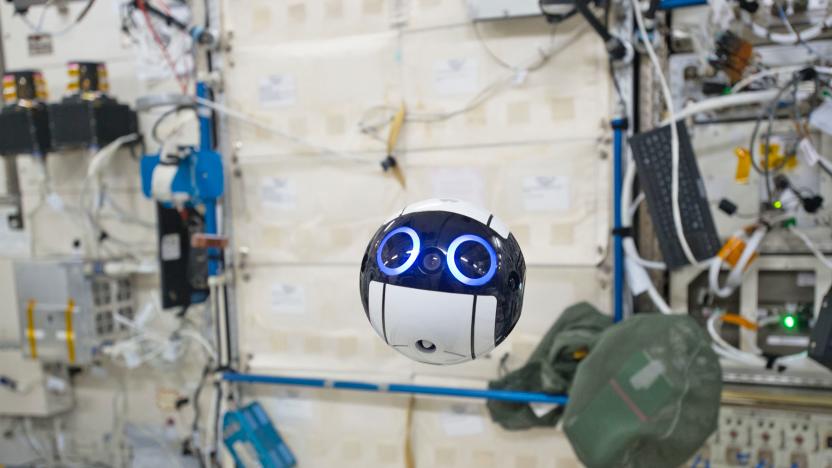
Meet the International Space Station’s adorable camera drone
Astronauts on board the International Space Station have a new robotic companion to play around with. The Japan Aerospace Exploration Agency (JAXA) has released the first images shot by the "Int-Ball," a spherical camera that floats around alongside the rest of the crew. With its monochrome paint job and blue, circular eyes, it looks a little like Wall-E's Eve — or at least her head, in some kind of prototype form. Notably, the Int-Ball can move around autonomously or be controlled by operators back on Earth. The images are transferred in near real-time allowing JAXA staff to quickly evaluate problems and offer possible solutions to ISS residents.
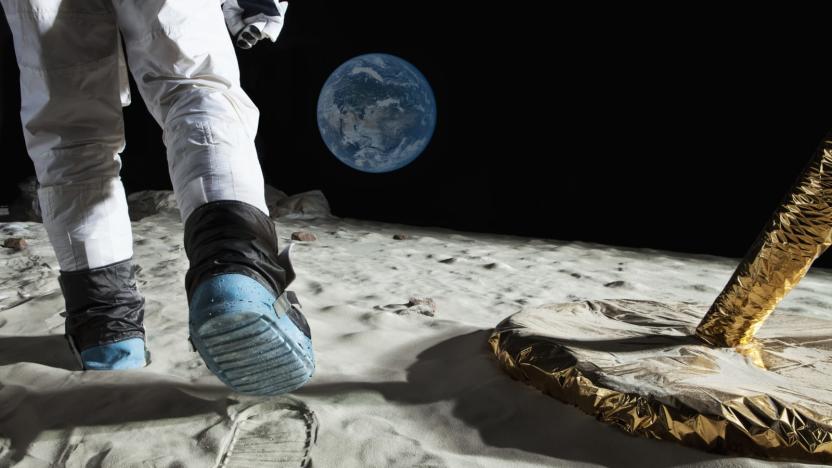
Japan wants to put a man on the moon before China does
Japan's space agency JAXA has submitted an ambitious proposal to the country's Ministry of Education, Culture, Sports, Science and Technology: it wants to fly and put a man on the moon by 2030. The agency is either directly challenging China's plans to do the same thing by 2036 or is planning to work with China to reach their identical goals at the same time. We offer the latter as a possibility, no matter how small, because a JAXA spokesperson told CNN that the plan is to be part of a multinational manned lunar probe. A Japan-only mission would be a bit too expensive for the agency.

Japan's space junk collection experiment ends in failure
Well that's disappointing. On January 27th, Japan's space agency (JAXA) successfully launched the Kounotori 6 spacecraft to the ISS. It was supposed to test a novel method of dragging space debris out of orbit however a technical issue prevented the spacecraft from carrying out that test before its fiery death in Earth's atmosphere on Monday morning.

Gravity wave ripples across Venus' hellish atmosphere
It took the Japanese atmospheric probe Akatsuki a while, but once it got into orbit around Venus just over a year ago, it immediately spotted a large, bow-shaped disturbance. Researchers now believe the phenomenon was a gravity wave, or atmospheric formation caused by the topography below. The feature is nearly 6,000 miles wide and remained in nearly the same spot for four days, despite scalding surface winds that whip at 250 mph. The unusual nature of the wave led the scientists to conclude that atmospheric conditions on the surface of Venus may be different than previously thought.

Japan's experimental mini rocket launch ends in failure
Japan's space program troubles aren't over yet, apparently. The country's Aerospace Exploration Agency reports that the launch of its miniature SS-520 rocket ended in failure. The first stage went off without a hitch, but communications problems prevented the second stage from igniting and carrying a microsatellite, TRICOM 1, into orbit. While rocket failures certainly aren't unheard of (just ask SpaceX), the incident is a black eye given what Japan wanted to achieve.








